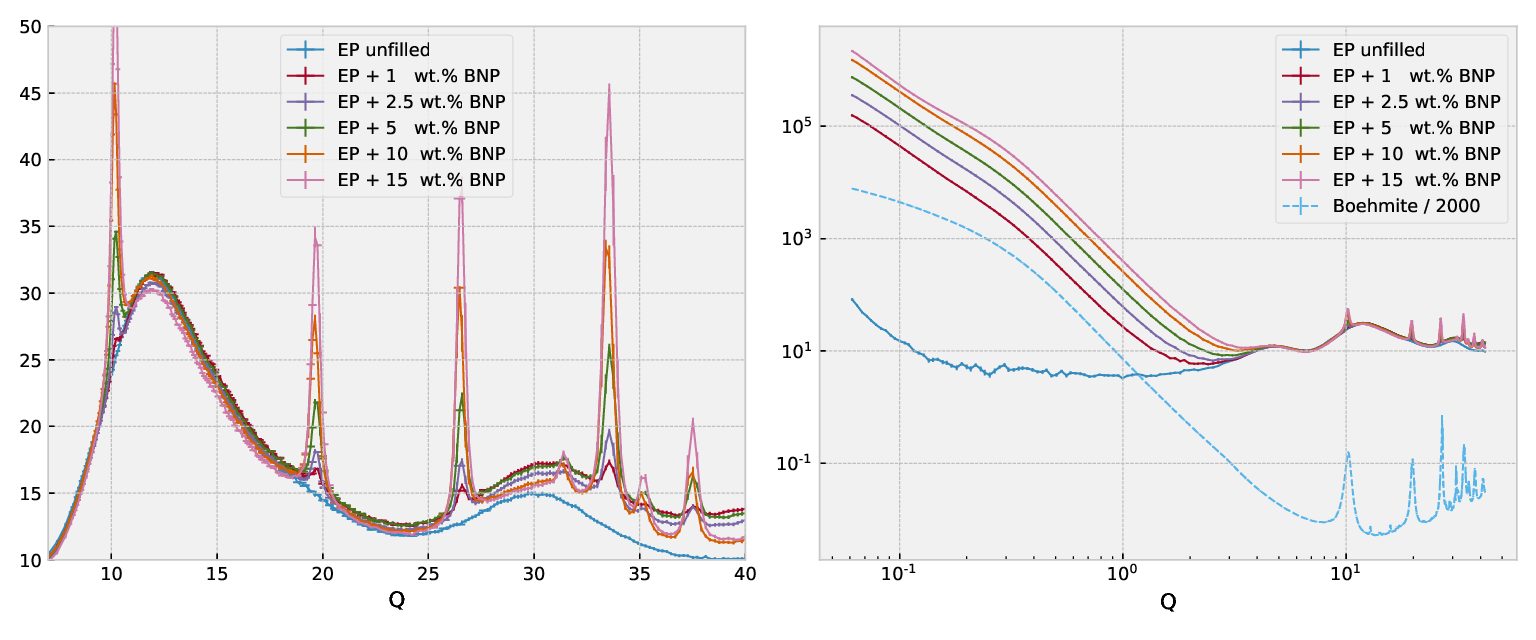
(In 2019, I stopped doing a post on every paper published due to workload and large numbers of papers that ended up with my name on it. However, I think it’s a tradition worth resurrecting, so here’s a series on 2020’s publications…)
The third publication is based on measurements that were done quite a while ago, but the interpretation only really started after the start of the pandemic. Reason for this was that the (then) Ph.D. student, Dr. Paulina Szymoniak (working with long-time BAM colleague Dr. Andreas Schönhals), was heading towards her defense, and wanted to do something with the data that we collected for her in the past.
The data was collected on a series of composites with increasing amounts of embedded boehmite particles. In addition, we measured the bare boehmite as well as the bare polymer. Since everything was measured in absolute units, and since the mixture behaved like a simple A+B mixture (i.e. where the components don’t change in the presence of each other), we could do something pretty cool in terms of analysis.
We analyzed the composite signal using our favorite McSAS, which gave us size distributions and volume fractions. With this, we could estimate how much material was present in the composite as isolated (well-dispersed) particles. Secondly, it gives us an estimate on how much material is present as small agglomerates.
The wide-angle signal was also interesting, containing the boehmite diffraction signals. We could analyse the volume fraction of boehmite by fitting the composite signal as a combination of the polymer signal and the boehmite signal, multiplied with their respective volume fractions. That turned out quite reasonable, and showed another cool aspect:
For increasing amounts of boehmite, the volume fraction derived from the wide-angle scattering deviated increasingly from the small-angle scattering derived volume fraction. Here, the wide-angle signal shows the amount of crystalline material, and the small-angle signal shows the amount of measurable particles.
At higher volume fractions, we were seeing increasingly more crystalline material than what we detected as particles. So we had a third measure for “missing particles”, which is likely present as large agglomerates in the material. These are too large for the limited coherence of our laboratory instrument, but the crystalline material still diffracts regardless of its state of agglomeration!
This was the second composite project of 2020, and really makes me think there’s something to these materials for the lab. I know composites are far from the hot topic they once were, but the practical utility of composites is undisputed. Studying composites remains important for all aspects of their life cycle (from synthesis, to use, to recycling), so this could be a good specialization. As mentioned, they also aren’t particularly hard to study with laboratory instruments.. Or so we thought…

Leave a Reply